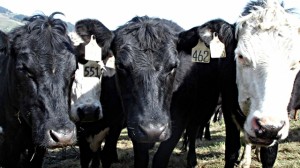An in-house food safety training program at Selma, Calif.-based Sunnyside Packing Co. prepares even its smallest growers for third-party audits.
The Sunnyside Agricultural Food Safety Education and Enhancement program — SAFE — launched in late 2010 with an eye to getting about 150 growers ready by this year.
“Going from 0% to 100% in one season was unattainable, so we started earlier,” said Todd Hirasuna, general manager. “This year starting Jan. 1, all of our growers are required to undergo a third-party audit.”
Growers in the Sunnyside program are a diverse bunch.
“Our sole purpose is to help educate and keep going a lot of the small family farmers who still exist here,” Hirasuna said. “In Fresno County or the valley, there are still very small immigrant farmers who farm anywhere from a half-acre to not much more than five or 10 acres. Our grower pool includes Hispanics or Southeast Asians; many don’t speak English, or English is their second language. Having the time and wherewithal to come to grips with food safety is above and beyond what most have the resources for.”
Training is conducted in more than three languages.
“There are not too many grower demographic makeup’s like ours left,” he said. “A lot of times unique situations require unique solutions and I feel like we’ve got one here.”
The program includes classroom and field components, scheduled on an ongoing basis and overseen by Irene Briseno, food safety coordinator. Sunnyside’s SAFE started up slowly about a year ago with surveys of each grower’s operations and evaluations of their practices.
“Once we’ve done the initial education, it’s onsite visits and continuing classroom education to make sure they remain compliant, following not only our company policies but industry best practices,” Hirasuna said. “It’s rapidly progressed to a kind of full-blown food safety program.”
Some growers were unhappy about such requirements — at least at first. They find the expense and documentation for audits burdensome. But there is a payoff at the end for them and for Sunnyside, as the company sees it.
“You really have to expect some pushback from growers,” Hirasuna said. “A lot say, ‘I’ve been doing this for 20 years, why do I have to do it differently now?’ They stay anyway because through media or word-of-mouth growers know the food safety movement is only gaining strength and is not going away. They won’t fall under any exemption.”
The payoff comes by consolidating volume from scattered growers.
“We’re giving them a greater fair market access, but also sustaining what we’ve had for decades,” Hirasuna said. “It enables us as a marketer and shipper to access some of the buyers that require consistent quality and volume. Those who undergo audits will be able to access the more lucrative buyers, while the ones who don’t will be seen as too risky. Even if we’re the only shipper in the area requiring this, they’re still net money ahead.”
The goal is to make small growers self-sufficient in food safety.
“They can find a way to incorporate it in a cost efficient and effective manner to their operations,” he said.
Growers who pass audits can have their produce packed under Sunnyside’s Calway and Truway labels. The company packs cherry and grape tomatoes under Truway; eggplant, squash, beans, peppers, onions and other commodities under Calway.
Even with many growers in its fold, Sunnyside isn’t the largest operation out there.
“Normally we have 15 to 20 fulltime employees,” Hirasuna said.
One is Briseno, hired in September as food safety coordinator. She conducts onsite visits, among other aspects of the training.
The classroom portion met six times in 2011; two classes have happened so far this year, and more may be scheduled before production hits full stride.




